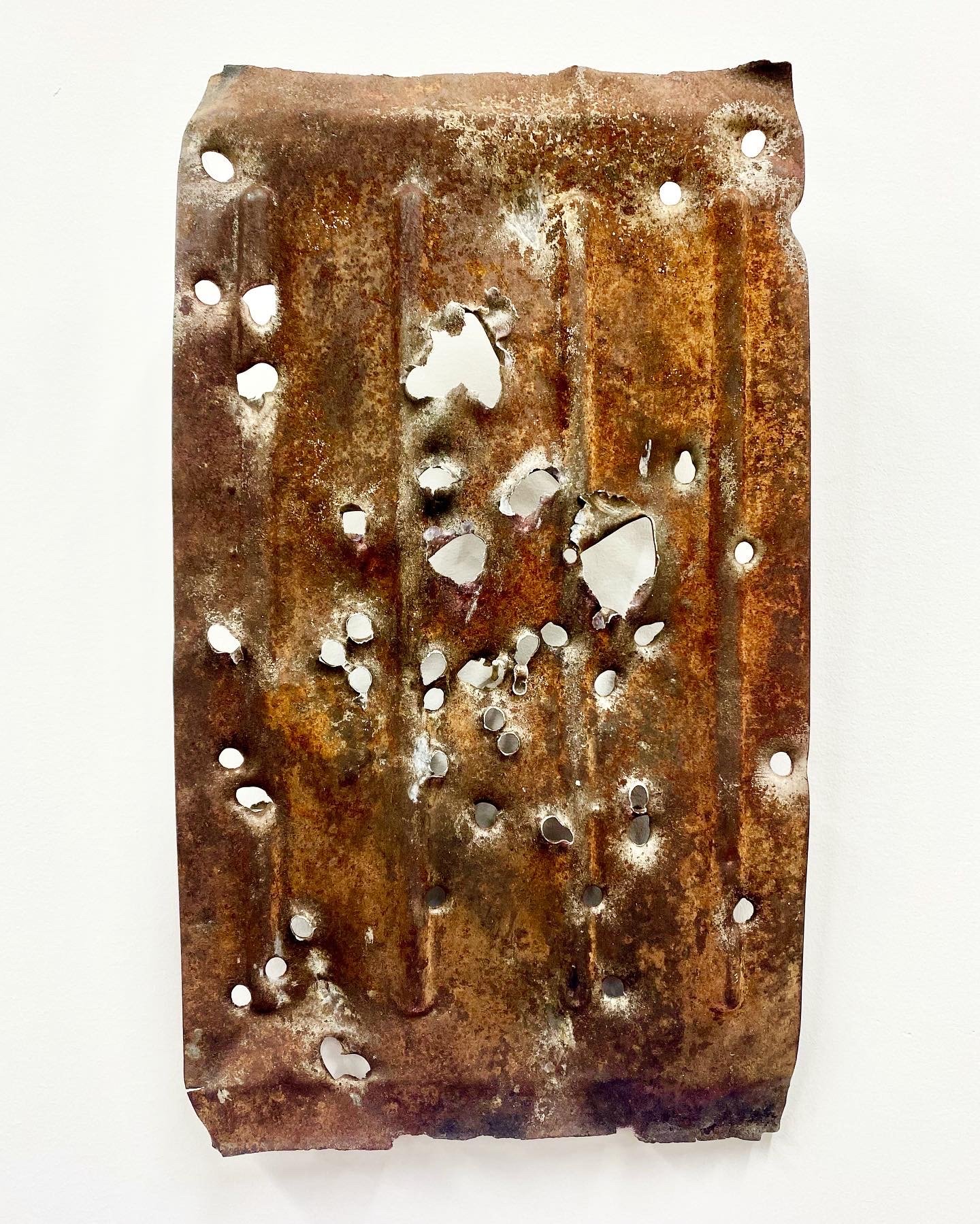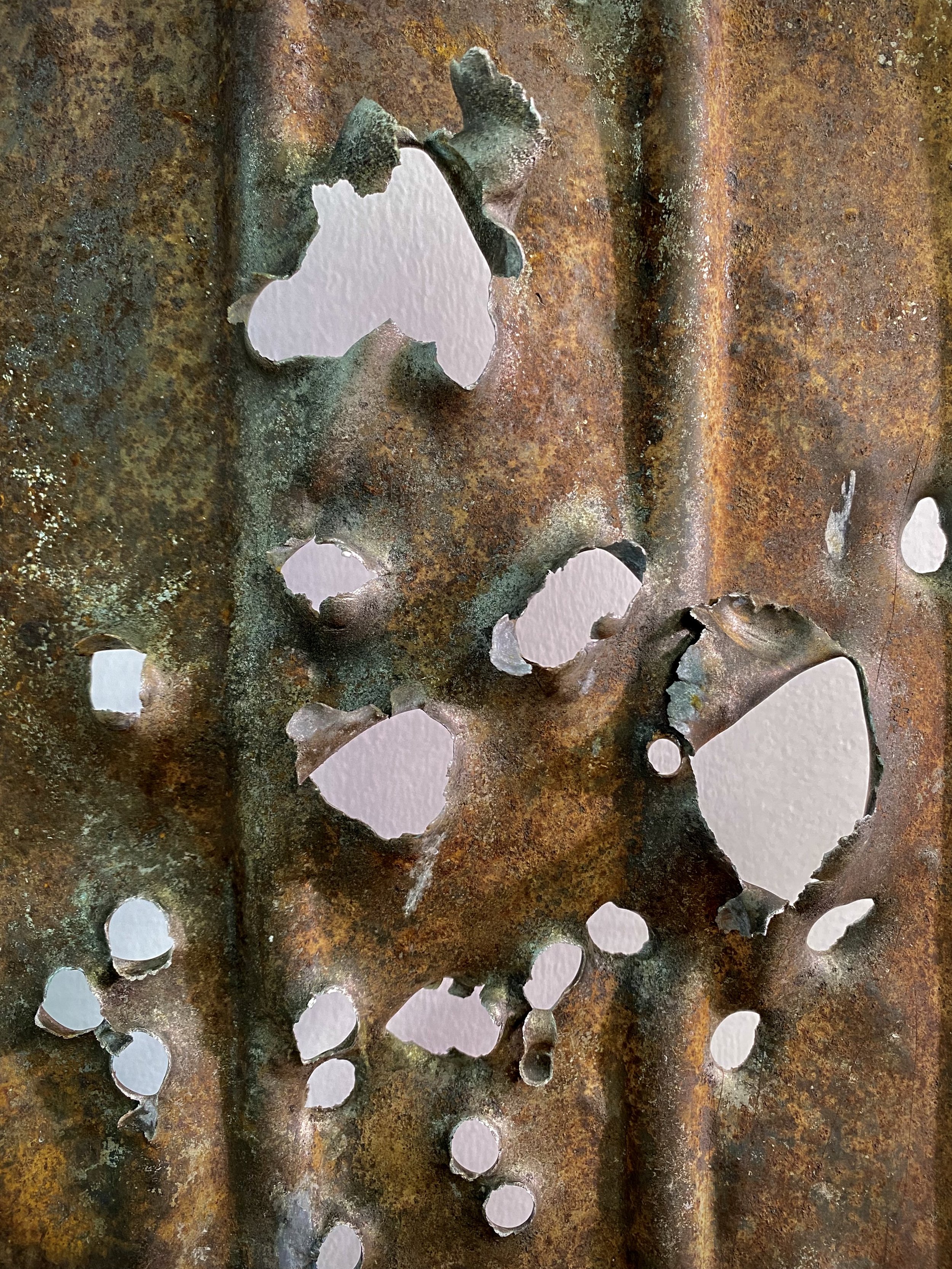 Image 1 of 5
Image 1 of 5

 Image 2 of 5
Image 2 of 5

 Image 3 of 5
Image 3 of 5

 Image 4 of 5
Image 4 of 5

 Image 5 of 5
Image 5 of 5






America is a Gun
Is the shooting of guns always about violence? Target shooting as a sport does not seem violent on its face, but the goal of centering your shot is based on the idea of increasing the lethality of the act. It is an abstraction rooted in violence. A hunter might say that shooting game for sustenance is not violence, and the homeowner might say the same about protecting one’s family. But in both cases, the intention is still to end life, or cause harm. This is not to put any judgment or onus on either hunting or self-defense. Both are natural, and perhaps instinctive parts of human existence. But they certainly involve violence.
Can violence be art? Before the advent of conceptual art at least, visual art generally involved acting upon a static medium with some kind of tool — hands, brushes, chisels, gouges, etc. Sometimes, this process is a gentle, sensual act of the kind we usually associate with creativity. But sometimes it is not. Many artists, particulary in the post-WWII period, approached their work with a destructive ferocity.
In 1950s Japan, artists of the the Gutai group engaged in highly physical, sometimes destructive, art. Saburo Murakami for example, would set up a large paper canvas and charge through it, kicking and ripping at the material to mark his passage (2nd image). He claimed that was inspired in his work by the exuberant physicality of small children. In 1960s Italy, the "spacialist" artist Lucio Fontana was known for creating simple compositions in which he would puncture or slice through the canvas; an attempt, he said, to "escape … from the prison of the flat surface." His work now sells for tens of thousands of dollars (3rd image).
So, can a gun be a tool of art? We live in a time in a place where many people feel the need to project violent power, and to express themselves through destructive and chaotic actions. Isn’t art supposed to say something about the time in which it was created? If so, this metal panel found in rural Washington speaks volumes. The anonymous “artist” seemingly took care to remain within the frame, creating a composition that is well-balanced and interesting — but definitely not tender or sentimental.
Steel, 19.5” x 11” x 3”
Is the shooting of guns always about violence? Target shooting as a sport does not seem violent on its face, but the goal of centering your shot is based on the idea of increasing the lethality of the act. It is an abstraction rooted in violence. A hunter might say that shooting game for sustenance is not violence, and the homeowner might say the same about protecting one’s family. But in both cases, the intention is still to end life, or cause harm. This is not to put any judgment or onus on either hunting or self-defense. Both are natural, and perhaps instinctive parts of human existence. But they certainly involve violence.
Can violence be art? Before the advent of conceptual art at least, visual art generally involved acting upon a static medium with some kind of tool — hands, brushes, chisels, gouges, etc. Sometimes, this process is a gentle, sensual act of the kind we usually associate with creativity. But sometimes it is not. Many artists, particulary in the post-WWII period, approached their work with a destructive ferocity.
In 1950s Japan, artists of the the Gutai group engaged in highly physical, sometimes destructive, art. Saburo Murakami for example, would set up a large paper canvas and charge through it, kicking and ripping at the material to mark his passage (2nd image). He claimed that was inspired in his work by the exuberant physicality of small children. In 1960s Italy, the "spacialist" artist Lucio Fontana was known for creating simple compositions in which he would puncture or slice through the canvas; an attempt, he said, to "escape … from the prison of the flat surface." His work now sells for tens of thousands of dollars (3rd image).
So, can a gun be a tool of art? We live in a time in a place where many people feel the need to project violent power, and to express themselves through destructive and chaotic actions. Isn’t art supposed to say something about the time in which it was created? If so, this metal panel found in rural Washington speaks volumes. The anonymous “artist” seemingly took care to remain within the frame, creating a composition that is well-balanced and interesting — but definitely not tender or sentimental.
Steel, 19.5” x 11” x 3”